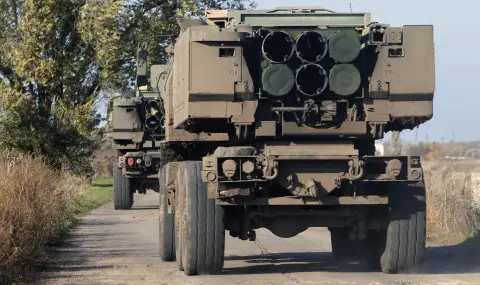The main conclusion in the latest report by the Stockholm International Peace Research Institute (SIPRI) sounds surprising at first glance: global arms exports have hardly changed compared to the period 2010-2019. But a look at individual countries reveals the dramatic geopolitical changes that are currently shaking the world.
Ukraine is now the largest recipient of heavy weapons in the world (in the period 2020 - 2024). Compared to the years from 2015 to 2019, the country attacked by Russia has increased its imports almost a hundredfold. Almost nine percent of all global arms exports ended up in the defensive Eastern European country.
Russian aggression and fear of America
During the same period, other European countries recorded a 155% increase in arms imports. This is also a direct consequence of the Russian aggression that began in February 2022. According to researchers from Stockholm, the reason for this is also uncertainty about the development of US foreign policy.
Matthew George, one of the authors of the new SIPRI study, says: "The new data on arms deliveries reflect the rearmament that has begun in European countries in response to the new threat from Russia. On the other hand, some of the world's largest arms importers, such as Saudi Arabia, China and India, have seen significant declines, despite heightened threat perceptions in their regions."
The US and Arms for Ukraine
According to the report, 35 countries were involved in arms supplies to Ukraine during the period under review. Between 2020 and 2024, the country received 8.8% of all global arms exports. The US accounted for 45% of all supplies, followed by Germany with 12% and Poland with 11%. These ratios once again clearly show the turmoil that is possible if the US does indeed withdraw from military support for Ukraine completely under Donald Trump.
SIPRI: US will continue to supply Europe
"As Russia has become increasingly aggressive and transatlantic relations have been tested during Donald Trump's first term, European NATO countries have begun to reduce their dependence on imports and strengthen European arsenals," says Peter Wezeman, a researcher at the Stockholm Institute. At the same time, close cooperation between Europe and the US in the arms sector has deep roots and exports from America, especially to European NATO partners, continue to increase.
After an unprecedented dispute with Ukrainian President Volodymyr Zelensky in the Oval Office, Donald Trump has canceled military support for Ukraine. We can only guess whether this is just a temporary measure.
Russia exports fewer weapons
The United States remains the world's largest arms exporter: 43% of all weapons in the world come from the United States. During the period 2020 - 2024, they supplied weapons to a total of 107 countries. In this regard, Matthew George says: "The United States is in a unique position when it comes to arms exports. The share of their exports exceeds by more than 4 times that of the second in this ranking - France".
On the other hand, between 2015 and 2024, Russia exported 63% fewer weapons, and in 2021 and 2022 the total volume of exports was the lowest in the last two decades. There is nothing surprising in this development: apparently preparing for the war against Ukraine, the country has been arming itself intensively, rather than selling weapons elsewhere. If Russia has continued to sell weapons at all, it has been mainly to China and India, Wezemen specifies.
The Gulf and Asian countries
Four of the ten largest recipients of weapons between 2020 and 2024 are countries from the Persian Gulf region: Qatar, Saudi Arabia, Egypt and Kuwait. And four other countries among the ten largest recipients are from Asia and Oceania: India, Pakistan, Japan and Australia.
And more: despite the war in the Gaza Strip, which began in October 2023, there was almost no change in arms imports from Israel between 2015 and 2024. According to the SIPRI report on their military operations since the start of the war, the Israelis have mainly used weapons that have already been supplied to them - mainly from the United States.
What changes are emerging in the future?
The conclusion of the new SIPRI report is that global arms exports may have barely changed compared to the period 2010-2019, but there are serious shifts in the purchases of weapons by individual countries. And even greater changes are already emerging in the future: in the next few years, for example, Germany plans to invest astronomical amounts in the Bundeswehr and in further support for Ukraine. Experts are talking about a sum of around 400 billion euros. Above all, these programs increase the profits of global arms manufacturers: As SIPRI already reported in December 2024, in 2023 alone, the turnover of the 100 largest arms manufacturers in the world increased by 4.2% to around 632 billion dollars.
The Stockholm International Peace Research Institute is considered one of the most authoritative sources of information on the production and export of weapons. The institute, which also receives state funding, was founded in 1966 at the initiative of the then Swedish Prime Minister Tage Erlander. He proposed the creation of SIPRI as a token of gratitude for the 150 years of peace that the Scandinavian country had enjoyed at the time.
Author: Jens Thurau
